Cultural Resources
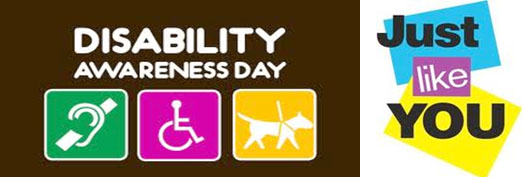
DISABILITY AWARENESS DAY
CULTURAL RESOURCES
Sunday, November 25, 2012
Sandra Jowers-Barber, Guest Cultural Resource Writer
Assistant Professor in the Department of Political Science, History, and Global Studies at the University of the District of Columbia
I. History
Disability has historically been a dividing point in our culture and society. The history of the disabled community has seen this community treated with pity and isolation and only recently has it seen a strong collective societal reversal. Less than twenty years ago, discussions around inclusion of the disabled were virtually non-existent. In The New Disability History: American Perspectives (2001), Drs. Paul Longmore and Lauri Umansky contend that the disabled body became a cultural fixation. Society found it hard to look at those who have physical differences and even harder not to stare at those differences, resulting in pity for the different and the need to keep them out of sight. Disabilities that were less physically identifiable such as deafness, blindness, and those that are mental health-related attracted a different type of fixation—they were viewed as cripples in need of charity.
A major legal change took place when the American with Disabilities Act of 1990 was signed into law. It changed the way society, government, and private industry began to interact with disabled populations. Additionally, disabled populations have empowered themselves. They have challenged long-held beliefs about limitations on their abilities. They have shaken up the societal norms that pushed them either out of sight or made them spectacles to be put on display. Organizations such as the American Foundation for the Blind, the National Deaf Association, and National Black Deaf Advocates were formed to lobby for changes and claim their own identity.
It is significant to note that the African American church, established in slavery, has always been a place of acceptance and expectations. In Black Deaf Students: A Model for Educational Success (2007), Carolyn E. Williamson notes that for successful students in her study the Black church was an important and influential institution. They felt that it was there that they were encouraged to become assertive and learn how to set and achieve goals. Most importantly they were encouraged to become independent thinkers. The African American church has historically been a place where all could come and be welcomed. But even there the idea of having a “certain place” in the church and not leaving it was for many a very real experience for a long time. Positive change has caused an intentional move to make space in the midst of the general body instead of outside of it.
The fact that disability has become part of the national and church discourse increases the opportunities to educate those who cling to old prejudices and stereotypes. The oft-repeated statement “We have more in common than we realize” is confirmed when people are able to interact with persons whom they think of as the “other.” Getting to the point where society believes that all people—those identified as abled and disabled—are the same is still a work in progress. Unfortunately, it has taken our country a civil war and peaceful challenges to brutal injustice to create the change that can be seen in the expanding conversation on inclusion for the disabled populations.
The voices of those who are disabled and have sought comfort in God, who created us all in his image, have become some of the most inspiring and forceful stories in history and in the Bible. Knowing those stories provides space for the history of the disability struggle to be incorporated into the larger human historical narrative.
II. Historical Lessons
My husband and I met in church. He was returning to his home church where I was an usher. He said he saw me in my uniform and wanted to meet me. He ended up in the adult Sunday School class I was teaching and became one of my best students. He knew the Bible and was smart. He told me about his children. His only son had been hit by a car and had not been expected to live. However, to the surprise of the doctors who treated him, he did survive. At first they thought that he would never be able to walk, talk, or take care of himself. He was able to overcome all of those challenges. His limp is noticeable, although he no longer wears a brace, and his speech is clear. A permanently bent left arm and clenched fist are further visible evidence of his accident. The short-term memory loss he suffers is not. But his open spirit and compassion for others is also visible for those who see with clear eyes.
The praying family that has supported, encouraged, and pushed him to do his very best has been a blessing and a fortress. He was protected against those who only saw difference and not determination. That family refused to allow either pity or isolation to exclude him from the village. He was expected to attend church and Sunday School regularly, and he did. He was expected to participate in church activities, and he did. He was the star pupil in the Jonathan Sunday School class for students with special needs. There was never time when his village treated him differently. In school he was expected to do all that he could and as well as he could. He refused to let cruel comments define him or shake his belief in himself. That I believe comes from the strength and love that has surrounded him and the high expectations set for him.
After I became his stepmother and his village expanded I also started graduate school to become a historian. He would ask me about people who were disabled and their history. Fortunately, I was able to show him African Americans such as Ray Charles, Stevie Wonder, and Harriet Tubman, who had made significant contributions despite challenges.
Several years before his accident, his younger sister, less than a year old, lost her hearing. She was taken to the doctor with a fever and rushed to the hospital. It was determined that the fever destroyed her ability to hear. At the time she was ready for school she was able to attend Kendall School, located on the grounds of Gallaudet University. Gallaudet is the only liberal arts institution of higher learning for deaf and hard-of-hearing students. The expectations were the same for her. The school offered free American Sign Language classes, and the family attended. Some members became more proficient than others, but everyone learned some signs. As the last member to join the family, I immediately went to classes. What was important to and for her was to see that her immediate family was willing to learn how to communicate with her in her language. She, and we, knew that we would never sign as well or as fluidly as she did, but that was not the point. We needed to show her our commitment to her as a family member. We also needed to work together to let her know that we would always support her as she attempted to do things that we knew would be harder for her to grasp.
The requirement for her to do her best was in place and she knew we expected her to face challenges, but she also knew that she had a village behind her. She was expected to attend church regularly. That meant that I needed to find a church home where she could grow spiritually and we could worship together. In Washington, D.C., Shiloh Baptist Church has what I believe is the oldest Silent Mission for deaf and hard-of-hearing worshippers in the United States. The Silent Mission was founded in 1913. The Sunday we visited, the Silent Mission Choir was signing. As the Senior Choir sang, I saw her following the signing and asked if she wanted to join the choir. She was 10 years old at the time, and she responded that she did. After service I met with the hearing representative of the choir while she met the members. This was a wonderful opportunity for her to meet and interact with older African American deaf people. This was her exposure to older deaf people of color who were active in church, who worked, who were retired, and who were married and had children and grandchildren.
At Kendall School her models were younger and mainly white. Fortunately, her classmates were extremely diverse. They embraced her and took her in and her village expanded again. This was a special place for her among a new village that showed her what her life could be even as she showed them how different the world had become with technology. They also embraced the entire family and showed us how beautiful diversity in God can be. Our daughter graduated from high school and attended the only technology institution of higher learning for deaf and hard-of-hearing students. Now a new mother, she has a hearing son who is a CODA (child of deaf adults).
Dr. Ernest Hairston, the first African American deaf man to get a Ph.D. from Gallaudet, and the late Linwood Smith, a deaf writer and poet, co-authored Black and Deaf in America: Are We That Different (1983). This is one of the first books by deaf African Americans to address the issue of deafness, race, and the importance of the family for African American deaf children. They argue that there are differences as well as similarities that need to be addressed. Its focus on African American hearing families with deaf children provides important information for parents. It is a helpful resource.
Both of our children have high self-esteem and self-worth. They were treated with all of the respect and dignity shown to all of our family members. They were expected to do their best just as everyone else was, and they were told not to let others define them. As a Christian family we explained that they were not less than anyone else because we were all made in God’s image.
III. Poetry That Speaks to the Moment
“Black and Beautiful,” a poem by Deborah Broadus, a deaf poet, shows the conflict and struggle she undergoes to find a place in a world that does not see her as worthy. Note how she evolves from her reaction to the negative first response she gets when she announces herself. The poem also shows the change that takes place in those responding to her. As the poet evolves, so do they. And they use a different lens to view her, a lens that finally allows them to use spiritual eyes to see her. The poem provides readers an example of growth and acceptance for both parties. It identifies with the low self-image Mephibosheth had of himself in the book of Samuel, but it shows how being seen with eyes of acceptance, such as David had, can change and raise one’s self-image.
Black and Beautiful
by Deborah Broadus
I said, “I’m Black and Beautiful.”
“They” said, “You’re Deaf!”
Thus effectively restricting me, isolating me
Outside their silent voiced boundaries.
I withdrew, camouflaged,
A self-designed mantle of invisibility.
Wounded, rejected, I in turn rejected; not to wither,
But to shelter and protect that which was fragile.
I fought my way though the silent pandemonium of “their” voices;
On a quiet quest;
To reunite my fragmented self, splintered by
Voiceless opinions spoken with harsh eyes.
My goal: a whole soul, indivisible.
Whole and strong, unwounded by “their” disdainful ignorance.
I grew without the irrigation/irritation of “their” loud, voiceless disapproval.
They beheld as I grew; face to the sun.
Battling constantly not to shatter and become this image “they” assigned to me.
That broken by misinterpretation and misunderstanding.
Lost in the lexis written on pages in books contained by binders,
I understood the unspoken, thus became that which I strove to attain.
I found myself within these expressions.
Words; visible, vain, terminology helped to heal the shattered image.
No longer invisible, I stand Black and Deaf;
And “they?” Now “they” say,
“You’re Black and Beautiful!”
IV. Songs for This Moment
“I Believe I Can Fly,” written by R. Kelly, is an inspirational contemporary song. It serves notice that putting faith in God and having a vision and a willingness to act can change your attitude and give you altitude.
I Believe I Can Fly
by R. Kelly
I used to think that I could not go on
and life was nothing but an awful song
but now I know the meaning of true love
I’m leaning on the everlasting arms
If I can see it, then I can do it
If I just believe it, there’s nothing to it
I believe I can fly, I believe I can touch the sky (2x)
I think about it every night and day
Spread my wings and fly away
I believe I can soar
I see me running through that open door
I believe I can fly (3x)
I believe I can fly
I believe I can fly
See I was on the verge of breaking down
Sometimes silence can seem so loud
There are miracles in life I must achieve but first I know it starts inside of me
If I can see it then I can be it
Hey, cuz I believe in me, oh
If I can see it then I can do it
If I just believe it there’s nothing to it
I can fly
Fly-eye-eye1
“If It Had Not Been for the Lord on My Side” (a traditional gospel song) speaks to the unfailing truth that with God all things are possible and achievable. In this version, sung by Helen Baylor, on the CD, she gives her testimony about her drug use before she begins the song. No matter what your condition, knowing that the Lord is on your side can give you the spiritual strength that you need to survive.
If It Had Not Been for the Lord on My Side
by Helen Baylor
If it had not been for the lord on my side (2x)
Tell me where would I be
Where would I be
He kept my enemies away (2x)
He let the sun shine through a cloudy day
He rocked me in the cradle of his love
When he knew I had been battered by the storm
So if it had not been for the Lord on my side
Tell me where would I be
where would I be.2
“I Smile”by Kirk Franklin offers the advice to keep smiling because despite all that you are going through God has not left you. Even though things aren’t what you want them to be, God is still there. The dedication at the beginning of the song speaks to everyone. We all have challenges and need to be reassured. A big part of prevailing over any difficulty is the attitude that one has concerning his or her plight
I Smile
by Kirk Franklin
I dedicate this song to depression,
recession and unemployment
This song’s for you.
Today’s a new day, and there’s no sunshine.
Nothing but clouds, and it’s dark in my heart
and it feels like a cold night.
Today’s a new day, where are my blue skies,
where is the love and the joy you promised me
you tell me it’s alright.
(I’ll be honest with you)
I almost gave up, but a power that I can’t explain,
fell from heaven like a shower.
(When I think how much better I’m gonna be when this is over)
I smile, even though I’m hurt see I smile,
I know God is working so I smile,
Even though I been here for a while,
I smile, smile . . .
It’s so hard to look up when you look down.
I sure would hate to see you give up now.
You look so much better when you smile, so smile.
Today’s a new day, but there is no sunshine.
Smile for me, can you just smile for me (3x)
And my people say
Ohohoh feeling so much better when you
Ohohoh you look so much better when you
Dallas, New Orleans, Cleveland, Detroit, Philly, Jersey, LA
All my people say
You look so much better when you smile, so smile.
I just want you to be happy
I just want you to have joy cause,
Can’t nobody take that away from you
I see you . . . smile!3
V. Audio Visual Aids
The following aids can be used to provide opportunities for teaching during Disability Awareness Day and are adaptable for a diverse population of abilities.
- Video featuring singing by a non-hearing choir:
http://www.youtube.com/watch?v=7ivb951SUAI
- Leroy Franklin Moore, Jr., a disabled poet, presents a moving poem about wanting to be accepted and invisibility: http://www.youtube.com/watch?v=03qT3QadnDA
- Christ United Methodist Church of the Deaf in Baltimore is one of America’s oldest deaf churches. In 2005, they started a project to tape their African American members to document their stories as the church celebrated its 100th anniversary. Their African American Deaf Mission started in 1905. Online location: http://www.umtv.org/archives/color_and_sound_barriers.htm
- Show an image of deaf preachers and a deaf congregation to illustrate that all of God’s children can learn about God.
VI. Stories and Illustrations
An inspirational story that will remind members of how God can use anyone despite what others may think of their abilities is that of Dr. Andrew Foster. Dr. Foster was the first African American male to graduate from Gallaudet University (then Gallaudet College) in 1954. He was born in Alabama, and he and his brother both lost their hearing from spinal meningitis. Their parents sent them to Alabama School for the Colored Deaf. The segregated school could not provide a good education and his parents moved to Michigan and lived with a family member so that the boys could get a better education.
Andrew grew up in a religious household and he went to church regularly and enjoyed it. He knew from his teenage years that he wanted to be a missionary after hearing a man from Jamaica speak to the church about his experiences in Africa. Dr. Foster applied to Gallaudet University and in 1950 he became the first African American man to be accepted at the University. In 1954, Foster became the first to graduate. His dream of becoming a missionary was one that Dr. Mary McLeod Bethune had many years earlier. Dr. Bethune did have what some would describe as the disability of being a woman. However, it was racism that kept them both from being sent to Africa. African Americans were not sent from America by missions to Africa. Bethune never went as a missionary. Instead she started Bethune College that is now Bethune-Cookman University and the National Council of Negro Women.
After receiving two Masters degrees, Dr. Foster went to Liberia in 1957. The missionaries he met there told him that there were no deaf people in Africa. Dr. Foster managed to find them and through his own mission, Christian Mission for the Deaf African, founded in 1956, he started deaf schools in several countries. Christian Ministry for the Deaf African continues to assist deaf Africans and provide spiritual guidance. Dr. Foster received an honorary doctorate from Gallaudet University in 1970. He was killed in an airplane crash in 1987 while in Africa. The following essay by Dr. Foster provides scriptural reasons for concern about the deaf, but it could be adopted for any disability.
Twelve Scriptural Reasons Why You Should Be Concerned about the Lost Deaf
by Dr. Andrew Foster
Deafness is a tremendous handicap. It bars countless people from hearing about God’s way of salvation. Every Christian should be concerned about their plight. Here are twelve reasons based upon the Word of God.
Because God made the deaf. “…Who hath made man’s mouth? or who maketh the dumb, or deaf, or the seeing, or the blind? Have not I the Lord?” (Exodus 4:11)
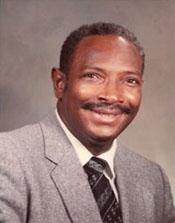 Because God Himself is concerned about the deaf – and other physically handicapped people. “Thou shalt not curse the deaf, nor put a stumbling block before the blind.” (Leviticus 19:14)
Because God Himself is concerned about the deaf – and other physically handicapped people. “Thou shalt not curse the deaf, nor put a stumbling block before the blind.” (Leviticus 19:14)
Because like all of humanity, the deaf are lost apart from Christ Jesus. “For all have sinned, and come short of the glory of God.” (Romans 3:23; 6:23)
Because the deaf (and the non-deaf) must be saved only through Jesus Christ. “He that believeth on the Son hath everlasting life: and he that believeth not the Son shall not see life; but the wrath of God abideth on him.” (John 3:36; 14:6; Acts 4:12)
Because God “is not willing that any should perish, but that all should come to repentance.” (2 Peter 3:9) He “will have all men to be saved and to come unto the knowledge of the truth.” (1 Timothy 2:4)
Because the deaf, who are cut off from normal communications, cannot come unto the knowledge of this truth unaided, “How shall they call on Him in whom they have not believed? And how shall they believe in Him of whom they have not heard? And how shall they hear without a preacher? And how shall they preach, except they be sent?” (Romans 10:13-15a)
Because Jesus’ earthly ministry embraced the deaf – as well as others often neglected. “…the blind see, the lame walk, the lepers are cleansed, the deaf hear, the dead are raised, to the poor the Gospel is preached.” (Luke 7:22)
Because the deaf, as creatures too, are included in Jesus’ command to “go ye into all the world, and preach the Gospel to every creature.” (Mark 16:15-16)
Because God plainly expects some deaf souls among the Great Harvest, “And in that day shall the deaf hear the Words of the Book…” (Isaiah 29:18) “. . . and the ears of the deaf shall be unstopped.” (Isaiah 35:5)
Because every Christian should show gratitude for his physical and spiritual senses. “But blessed are your eyes, for they see; and your ears, for they hear.” (Matthew 13:16)
Because aiding the needed deaf is consistent with Christian love. “But whoso hath this world’s good, and seeth his brother have need, and shutteth up his bowels of compassion from him, how dwelleth the love of God in him?” (1 John 3:17)
Because sharing the Gospel with the needy deaf is a source of God’s rich blessings. “He that hath pity upon the poor lendeth unto the Lord.” (Proverbs 19:17) “. . . he that winneth souls is wise.” (Proverbs 11:30b) “And they that be wise shall shine as the brightness of the firmament; and they that turn many to righteousness as the stars for ever and ever.” (Daniel 12:3)
Showing Your Concern
The Bible also clearly reveals God’s threefold method for reaching the lost deaf (and hearing):
- Christians must PRAY for the deaf. (James 5:17-18)
- Christians must GO to the deaf with God’s Word. (Matthew 28:19-20)
- Christians must GIVE to sound biblical witnesses to the deaf. (Luke 6:38)
So, why not become concerned today?4
VII. Making It a Memorable Teaching Moment
- The National Black Deaf Advocates, a national advocacy group, holds annual conferences and lobbies for policy on issues of importance to the deaf community.
- Shiloh Baptist Church in Washington, D.C. has an active Silent Mission and interprets the second service every Sunday. There is also a weekday Deaf Outreach program at the church.
- Gallaudet University has several deaf African Americans who have doctorates and whose research focuses on African Americans. There are workshops and seminars held on the campus.
- The American Foundation for the Blind has an annual conference and lobbies for policies to support the blind and visually impaired community.
VIII. Books and Websites to Increase Disability Awareness
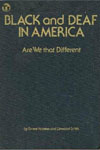 |
Hairston, Ernest. Black and Deaf in America: Are We That Different. Silver Spring, Maryland: T.J. Publishers, Inc., 1983. |
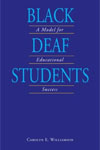 |
Williamson, Carolyn E. Black Deaf Students: A Model for Educational Success. Washington, D.C.: Gallaudet University Press, 2007. |
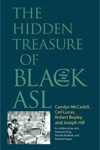 |
McCaskill, Carolyn. The Hidden Treasure of Black ASL. Washington, D.C.: Gallaudet University Press, 2011. |
American Foundation for the Blind online location: http://www.afb.org/default.aspx
American Foundation for the Blind online location: http://www.afb.org/default.aspx
National Black Deaf Advocates online location: http://www.nbda.org/
Christian Mission for the Deaf website includes a number of articles by Dr. Andrew Foster. Online location:
http://www.cmdeaf.org/resources/articles-by-dr-foster/the-social-aspect-of-deafness
http://www.cmdeaf.org/resources/articles-by-dr-foster/roots-out-of-a-dry-ground
http://www.cmdeaf.org/resources/articles-by-dr-foster/twelve-scriptural-reasons
Notes
1. “I Believe I Can Fly.” By R. Kelly. I Believe I Can Fly (MP3 Download). New York, NY: Jive Records, 2006.
2. “If It Had Not Been for the Lord.” (Traditional.) Helen Baylor. Helen Baylor: The Ultimate Collection. New York, NY: Word Entertainment, 2012.
3. “I Smile.” By Kirk Franklin. Hello Fear. Inglewood, CA: Gospocentric, 2011.
4. Christian Mission for the Deaf online location: http://www.cmdeaf.org/resources/articles-by-dr-foster/twelve-scriptural-reasons



